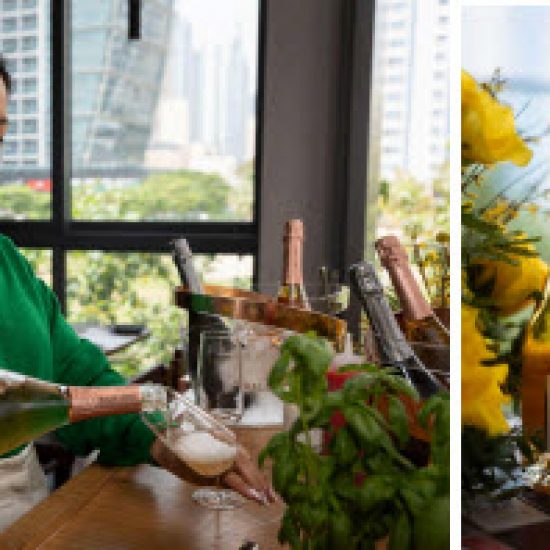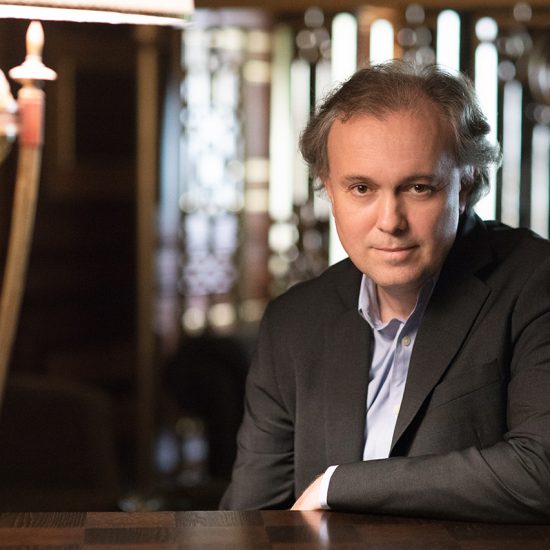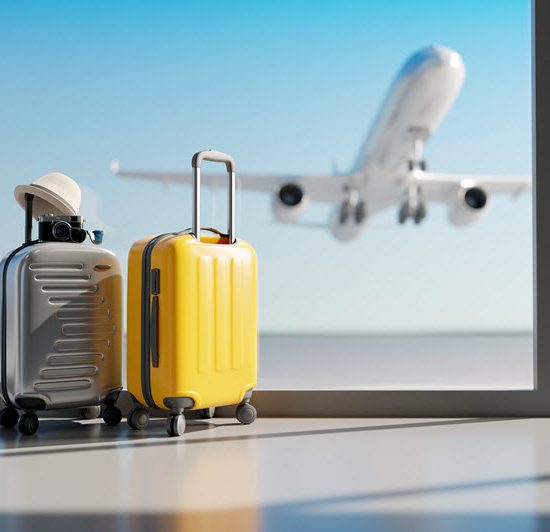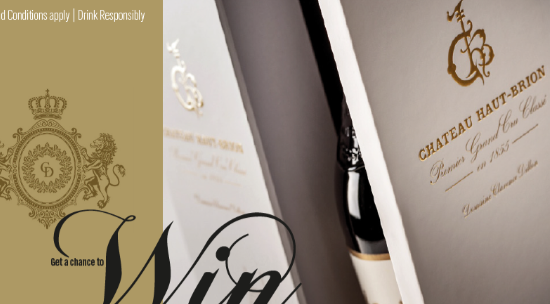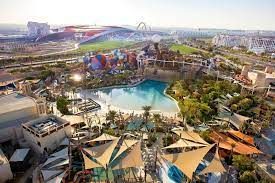
For a US$2,000-a-night (Dh7,345) trip to the land of happiness, I’m a little surprised by the “assumption of risk and limitation of liability” statement my tour operator, Amanresorts, insists I sign before proceeding with my Bhutan itinerary. “I understand that I am undertaking travel to a remote geographical area in an undeveloped country where, among other things, a sense of urgency, attention to detail, standards of quality, hygiene, political stability, cuisine, sanitation facilities, cleanliness, level of infrastructural development, telecommunications facilities, methods of conducting business, medical evacuation, etc, may be deemed unsatisfactory and/or not equivalent to those found in the developed world …”
First impressions, however, are good. I’ve flown to Paro from Kathmandu, a one-hour flight that takes you from airport hell to virtual nirvana, notwithstanding spectacular views of Everest from the left-hand-side window seats. Prior to boarding at Tribhuvan International Airport, I sit on metal seats in the crowded, noisy departures area, surrounded by shouting passengers and barking tannoys. Paro’s arrivals hall is new and squeaky clean, and almost deathly quiet. With only a handful of flights arriving and departing each day, other travellers are orderly and respectful, knowing that this is a country that chooses in advance whom it lets in – for the vast majority of nationalities, there is no visa on arrival – and charges them a minimum $250 (Dh920) a day for the privilege of visiting.
I’m met outside by a driver and guide, Passang and Penjor, who load my bags into a white Kia Sorento for the 90-minute drive to the capital, Thimphu. It’s late afternoon at the end of November, and the last leaves of autumn are falling. The winding road is smooth and in good condition, following a river and passing through some villages that, in places, look like a medieval film set, with ornate wooden houses, untethered farm animals and locals wearing traditional dress. Immediately it strikes me that you don’t realise the damage tourism does until you go somewhere that sees so few visitors and doesn’t pander to them. There are no billboards advertising hotels, no unsightly attractions, no one begging for money. The only signs are for local shops and moralistic government speed warnings in English, such as: “If you are married, divorce speed.”
As darkness falls, Penjor briefs me about the upcoming programme, answers my questions and asks me what my interests are, so that he can tailor the trip to my personal preferences. Unfortunately, the next day he reports sick and I don’t see him again, but I’m told this is unusual.
Just west of the capital, on a forested slope next to the Royal Palace, Aman’s Thimphu lodge is one of the most extraordinary places I’ve ever stayed at. One of five Kerry Hill-designed lodges in the country, around which Amanresorts has crafted its 11-night Amankora circular journey (aman meaning “peace” and kora meaning “journey, or pilgrimage”, it has just 16 rooms, but is built like a fortress, with high whitewashed walls and long flights of stone steps. Uniformed staff welcome me in, where the interior is both grand – soaring ceilings, designer fireplaces and huge teak doors – and comfortable with champ-wood floors and walls, local stone and slate elsewhere. The bedrooms, which are more or less the same in each lodge, feel like they belong in a very expensive designer ski chalet, with smooth wood floors, terrazzo stone baths, wooden cladding and individual wood burners with an impeccably stacked and cut supply of kindling. I am particularly fond of the view outside my window onto the edge of a thick cypress forest and of the hot-water bottles and short stories that staff place on the bed each night. The only shortcomings are the lack of a pillow menu and the distant barking of packs of stray dogs.
The à la carte menus at all the lodges are served whenever guests want, so if I decide to eat at 3am, there is always someone available. Tired from the journey, and with the night outside cold and dark, it’s a joy to wander down to the conjoined lounge and dining area, which is separated by a soaring, double-sided designer fireplace, and listen to a traditional guitarist, who performs unobtrusively for me and a handful of other guests. On the menu is Thai noodle soup, chicken curry and wok-fried kale in oyster sauce, served by local women named Choden and Chimi, who are soothing and have clearly been trained to Aman’s exacting standards, but without losing their identity.
Having been sceptical about the prices charged at the Amankora lodges – though I am receiving a media rate, it is the most expensive of all the hotels here – you can see why an 11-day trip costs over $10,000 (Dh36,725) per person. Apart from the architecture, the investment in the 370 staff the company employs in Bhutan is impressive. With only one expatriate allowed for every five locals employed, some of the employees have been sent for extensive staff training at other Amanresorts around the world. Included in the nightly rate is accommodation, all food, most drinks, your full-time driver and guide, petrol, and some entrance fees. Extras include spa treatments, which are excellent, reasonably priced and available until about 10pm daily.
Early the next morning, with a temporary guide, I head into the city to meet Damcho Rinzin, head of the marketing and promotion division of the Tourism Council of Bhutan. Educated in Canada and a fellow Manchester United supporter, he tells me that tourism is the second most important industry in terms of revenue, after hydroelectricity, but that although Bhutan wants to increase the number of visitors from just over 155,000 per year, and an increasing number of hotels are opening, it will continue its policy of “high value, low volume” tourism. It will maintain a $65 (Dh240) per person per day government levy on tourists, which goes into a common pool to pay for free education, healthcare, roads and other development goals. “What’s very important for us is our own people. We can’t open uncontrolled tourism. Tourists may unintentionally disrespect the culture, then the locals would get irritated. So before any initiative, we ask: ‘Do the locals want it?’” One stumbling block might be that, at the moment, most tourists actually come from India, and because of the country’s necessarily close relationship, they don’t need visas at all and can simply drive in from neighbouring states such as Sikkim.
Thimphu, which is not the country’s original capital, has a population of just over 100,000 and is probably the least attractive of Bhutan’s major cities. The downtown area has lost most of its heritage architecture. The best site seems to be the National Memorial Chorten, where I arrive just in time to see a very public Buddhist blessing ceremony. An animal rights charity quietly raising money near the exit makes me reflect on the delicious barbecue yak sandwich I’ve eaten for lunch. In a country mercifully devoid of industrial slaughterhouses, yak seems to be one of the more accepted forms of meat here; most of that consumed by tourists is imported. Smoking is also banned in public.
The countryside surrounding Thimphu is well worth exploring. Just 14 kilometres north of the capital, on the edge of Jigme Dorji National Park, is the Cheri Monastery, a meditation centre that was established in 1621 as the first monastic school in Bhutan. After crossing a few wooden bridges over pristine rivers, it’s a beautiful 45-minute hike up through forested hills. “Monks come and stay here for three years, three months and three days,” says my guide. “They don’t speak, and only after that they get the title of Learned One.” He explains that unlike other Buddhist countries like Thailand, which have made concessions to the tourists regarding etiquette at religious sites, behaviour such as taking photographs inside temples is not allowed. “The reason for this is that people take pictures back home, and these are very valuable to our hearts and we believe that things can lose their merit.” The concept of earning “merit” is tied up with the belief in karma, and locals believe that hanging prayer flags to flutter in the wind or turning a prayer wheel to spin out mantras about peace and compassion into the universe will keep them on the right side of any final reckoning. It is also borne out in the endearing welcome guests receive, including personalised welcome cards at each lodge addressed to “Aum Rosemary” and the constantly repeated statement “Tashi delek” – may good things come to you.
Back at the hotel and prior to dinner, a troupe of folk performers sing and dance beside the firepit outside, while guests can sit on cushions heated with blankets and hot-water bottles. I’m told the first song is to “wish that rays of heaven would fall on this beautiful world”, and that the next depicts the sacredness of mountains, while the final one involves the subduing of evil spirits.
The next day I’m met by my new guide and driver, Tashi, from Paro, and Tshering, from eastern Bhutan. They tell me that Tashi means “good luck” and Tshering means “long life”, so I seem to be in good hands. After a delicious black-eyed iced chai – cold Indian-style tea with milk, sugar, spices and a shot of espresso, it’s time to drive east to Punakha, which, as the crow flies, is only really in the next valley, but the winding roads in various states of construction means that the journey takes hours. Despite the country’s good record on environmental protection, I’m sad to see – and breathe – the black smoke coming out of the back of many of the vehicles. Combined with clouds of dust, it makes opening and closing the car windows, and cleaning the windscreen a constant. The roadwork, however, offers an extraordinary window onto a culture in flux, as village life comes up against construction teams from India cutting a much-needed route from east to west. However bumpy, dusty and narrow the road currently is, I have to constantly remind myself that it’s the country’s only main road.
The highlight of the road to Punakha is the Dochula Pass, which, after passing through forest of oak, hemlock and fir dripping with Spanish moss, rises to 3,140 metres and offers good views towards the mountains of Jhomolhari and Masagang, on the border with Tibet. I ask Tashi why we can’t drive closer to these mountains, which top 7,000 metres. “There is no road at all,” he says. Why, I ask. “Because we don’t want to build roads into the mountains.” We stop in a botanical garden for a delicious picnic of salads and curries, including hoen tshey datsi, or chilli with cheese, in which large chillis are the main vegetable.
We arrive in Punakha, a quiet riverside town of 25,000 people, just before sunset, the road winding north along the glacial river valley, opposite its spectacular dzong, towards Gasa. Aman’s Punakha lodge is centred around an old farmhouse on the other side of a swaying footbridge, where a golf buggy takes me to the main building. This lodge has just eight rooms, though four more are currently being built, and their light-coloured rammed-earth exteriors are a brilliant contrast with the natural setting. A gorgeously restored wooden farmhouse is the centrepiece, though, offering a greater sense of place. Overall, this is my favourite lodge along with Paro. There’s more dancing outside, followed by a delicious spicy Bhutanese-Malaysian fusion dinner cooked by the hotel’s chef, who is from Penang.
The next morning, however, after a breakfast of tea and thukpa, Bhutanese rice porridge with chilli, onion, garlic, ginger and coriander, we set off back down the valley, and I begin to feel very ill. Affected by what seems to be a combination of altitude and motion sickness, I take it easy by visiting a nunnery and resting before walking with Tashi through the countryside, coming across idyllic farming scenes and a archery contest, where groups of men from the surrounding area compete in two teams, shooting arrows at targets 150 metres away. While some have traditional bamboo bows, most have American compound bows costing about $1,600 (Dh5,875) each. “Everyone must be carrying the latest bow, at least $1,000 [3,670] worth,” says Tashi. “It’s like having a new phone.” Also striking is the combination of traditional dress and modern sports shoes worn by the cheering men.
As we walk back, I tell Tashi that it would be a shame if things modernised much more. He agrees, pointing out that all the farmers we meet seem genuinely happy. “They like to work with the seasons and have nothing to worry about. People with money are in cities working, but they are not happy. They are only concerned with getting more. Guests, some wealthy ones, are always on the phone, looking for Wi-Fi, so their mind is elsewhere.” It seems to me that farm life is in some ways more secluded than monastic life, as in the monasteries monks all seem to have mobile phones, and in the famous “fertility temple” of Chimi Lhakhang, prayers are chanted while a multitasking monk scrolls through Facebook on his smartphone with one hand as the other turns the pages of his prayer book.
Bhutan, which is about the same size as Switzerland or a single Indian state, has a population of just 750,000 people and is divided into 20 districts, or Dzongkhags, and soon it’s time to head further east to Gangtey in the central district of Wangdue Phodrang. Here, another long winding roads takes us through some old-growth forest to the Pele La Pass at 3,390 metres, where a few huge woolly yaks are grazing, before descending down to the Phobjikha Valley. Every year more than 400 rare black-necked cranes migrate here from Tibet between November and March, and I’m lucky enough to see several groups of them during my trip. The village, which is still largely unmodernised, has a population of 5,000 centred around a 16th-century hilltop monastery and small market.
Aman’s Gangtey lodge, at 2,980 metres has the highest altitude of all five, and is situated at the head of the valley, with great views from the dining room. Dinner comprises riverweed soup, cheese dumplings, sautéed eggplant, broccoli with onion and tomatoes and potato curry. For some reason – possibly the altitude – I’m not sleeping very well, but the staff, who bring pots of tea to the room each morning and clean at least twice a day, when guests are at breakfast and then later on, could not have been better. Laundry, which is included in the price, is also taken care of, leaving guests to make the very most of their time away.
The next morning, we take a drive along the valley and walk from the village down to the valley floor through a pine forest, the floor littered with millions of pine needles. Tashi explains that a government-sanctioned “community-forest” approach – whereby local people take responsibility for their resources – has stopped illegal logging and promoted sustainability. We stop for a picnic lunch overlooking the plain and then visit the crane observation centre. In terms of scenery, I find Montana just as beautiful, but it’s the isolation here – both physical and cultural – that is most affecting. That evening, I sample a traditional hot-stone bath in a candlelit hut on a hill near the lodge, overlooking the valley. A traditional healing experience dating from long before hospitals or clinics, the process involves heating mineral-rich rocks from local rivers for several hours in a fire before lowering them into a wooden tub full of water scattered with artemisia, a local herb. Guests can add cold water as they choose before sinking back into the almost boiling water to enjoy the view.
Later that night, I have dinner with a group of Bhutanese tour guides in a stone potato shed, which has also been lit by candles and heated with a wood-burning oven. Food from the Aman is served, including pumpkin soup, cucumber and cheese salad, dumplings and braised yak meat. Then it’s time to get an early night before tomorrow’s drive to Bumthang, Bhutan’s spiritual heartland.
Tashi has warned me that the drive will be long – at least six hours – but that, as with every day, BST, or “Bhutan stretchable time” will apply. Yet, even after everything I’ve seen so far, I can’t quite believe the state of the road between Gangtey and Trongsa. Enormous holes in the unsurfaced, mid-construction road mean that Tshering has to drive excruciatingly slowly to avoid damaging the car. While a Kia Sorento would be fine on smooth roads, a UAE staple such as a Toyota Landcruiser or Nissan Patrol would be infinitely better here. I also start to realise why some guests opt for helicopter transfers, at a cost of $5,000 (Dh18,365) or more an hour. Still, it’s necessary work, and Tashi tells me it will all be finished by 2018.
After what seems like an eternity, we reach Trongsa, and stop quickly to tour its spectacular dzong, which is the largest dzong fortress in the country, before carrying along the now-improved road east. When we reach the Yotong La Pass at 3,425 metres, it’s covered in swirling fog. Descending down into the Bumthang Valley, we’ve now reached the most remote part of the tour. This is the farthest east that visitors can currently go staying in luxury accommodation, and again, the contrast between the comfort levels at the Aman lodge and the Wild West-style town is stark.
There’s a lot to do in Bumthang, and Tashi starts by taking me on a whirlwind tour of its most important religious sites, and explaining why it’s the country’s spiritual heartland and how it is linked with the founder of Bhutan, who was Tibetan. The colourful painted doors and walls at the various temples give Tashi – whose commentary can be slightly monotonous – a chance to illustrate various precepts, such as the wheel of life. He takes me to the oldest monastery in the country, Jambey Lhakhang, which is thought to date from the year 659, and which, like all temples, is constantly circumnavigated by locals in the clockwise direction. Here, it’s so old that the wooden prayer wheels and stone steps have been worn to the point of contortion by generations of use. The building has a well-preserved structure and an extremely atmospheric inner sanctum, where we happen upon an extraordinary live ceremony “for the well-being of country and to relieve the suffering of all sentient beings”. A low hum draws us in, where we see monks chanting, and beating and blowing on various instruments, backed by local contributors including several women. Here, the air is heavy with history and wafts of incense, and I can’t help but hope that these pious, steadfast pleas are heeded.
I tell Tashi I want to do some walking, so we walk to our lunch spot through a nearby forest, where, again, there is an agrarian idyll of free-roaming farm animals that seem to be enjoying their wood-cabin-like shelter. Across the country, I’ve seen farmers gathering bracken and pine needles for bedding, hay and millet as winter feed, and air-drying chopped turnips to feed their animals. I’ve seen no trace of chemicals, no mistreatment, nothing unnatural – and the animals seem to be part of the family, free from the conspiracy they fall victim to in most other parts of the world. I’m told that once animals reach past their point of productiveness, they’re not dispatched, but simply retired, destined only to die from disease or old age.
We have a prearranged farmhouse lunch with housewife Tsomo, who serves us sula – tea with butter and salt – and then the lunch that she’s spent the whole morning preparing. There’s handmade buckwheat noodles, potato curry with local cheese and coriander, chilli cheese and rotis. Keen to burn off a few calories, I’ve opted to mountain-bike down the valley, back through the town and into the lodge, which is situated next to the historic Wangduechhoeling Palace, currently under renovation.
The next day, we take a drive out on the beautifully smooth road to the even more remote Tang Valley, where we visit the Ogyen Choling Foundation, which includes a museum in a traditional grand home dating from 1897. I meet Kunzang Choden, whose family history here goes back 20 generations and whose parents were feudal landlords. Choden was educated by Irish nuns in India, later studied in the United States and has a Swiss husband; she also happens to be Bhutan’s first female novelist writing in English. Choden explains how Bhutan only started to transition out of a feudal system in the 1950s. “Until 1969, there was no money, it was a barter and subsistence economy.” The rooms of this house, which include a grain store and cloth stocks, illustrate the forms of payment that were made.
We press on south to the Ura Valley, driving in a huge loop back to Bumthang, where again the snap and crackle of wood fires and an impressive choice of menus await. After days of choosing Bhutanese food, it’s great to be able to select French onion soup, watermelon salad, potato and buckwheat gnocchi and grilled trout. I have an excellent “holistic massage” by a spa therapist from Trongsa and return to my room to find a humidifier has been installed, after it was noted that in Gangtey I had found the air too dry.
It’s a 12-hour drive or a 30-minute Druk Air flight from Bumthang to Paro, and I’m glad I’ve chosen the latter, even though on the steep descent the cockpit door flies open and stays open until we’ve landed. Tshering has had to drive back, so we’re met at the airport by another driver, this time in a Hyundai Santa Fe. Another riverside town of 36,000 people, Paro’s main sights are the huge square-shaped Rinpung Dzong and the famous Taktsang monastery, also known as the Tiger’s Nest. The Aman lodge, its biggest in Bhutan with 24 rooms, is well located for Taktsang, and has a beautifully quiet spot north-west of the town. All but hidden in a pine forest, but with views of the jagged mountains in Jigme Dorji National Park, the ambience is, again, exceptionally serene. I have an excellent Thai massage in the spa – a therapist called Ap Tandin crunches through all the knots with ease – before attending a seminar about Gross National Happiness in the lodge’s meeting room.
Ap Kinzang Lhendup, an expert in the subject of “GNH”, gives me the history of the policy, which began in the 1980s as an alternative way of measuring success to GDP, though he says the two are not necessarily in opposition to each other. Lhendup is frank about the time it took to make the policy meaningful, and explains that while nothing can “make” a person happy, the government “tries hard to create the enabling conditions for happiness and a strategy for taking this forward”. He explains that the central pillars of GNH are preservation of the environment; promotion of culture, which includes the wearing of national dress; sustainable economic development; and good governance. The entire population is surveyed in person about their psycho-social well-being, how their time is used, their health, community vitality and satisfaction with the education system. “Challenges” include waste management, corruption and border issues. “We don’t have military might or financial strength,” he says, “so the only way we can be distinct is by national identity, having our own culture.”
The next day it’s time for one of the highlights of the trip – the hike to the Taktsang monastery, built 900 metres up on the edge of a cliff. Legend states that Guru Rinpoche, an 8th-century Indian Buddhist master, flew from a dzong in the east of the country on the back of a tigress, and meditated in a cave on the site of the monastery before bringing Buddhism to Bhutan. I wonder if the immobility characterised by the state of the country’s roads has anything to do with people’s continued belief in flying tigers, thunder dragons and other fantastical tales. Yet, there’s nothing like hiking for delivering a sense of momentum, and Tashi and I set off at a good pace. I see more tourists than I have all week – perhaps a few hundred at various places on the trail – but it’s only crowded at the monastery itself. The walk gives impressive views of the Paro Valley, the dramatic cliffs and the monastery itself, the sight of which is more rewarding than you’d imagine.
We finish the trek in three hours, and my trip is completed with a look at Paro town and a further drive to the Haa Valley in the west, along the country’s highest road which peaks at the 3,822-metre Chele La Pass. There’s hardly any traffic and it’s a smooth, beautiful road through pockets of fir, hemlock and oak forest festooned with Spanish moss. The pass is covered in fluttering prayer flags, as if to congratulate us on reaching the top.
On my day of departure, I take a self-guided walk from the lodge through several villages to Drukgyal Dzong, a ruined fortress from 1649, which wouldn’t look out of place in Italy. The original houses on the way are lovely, but the dzong is full of construction workers, and a bulldozer is knocking down one of the buildings. Back at the lodge, I tell management that if that carries on, and if the traditional houses of the village are lost and replaced with modern fakes, this place won’t feel nearly as special.


